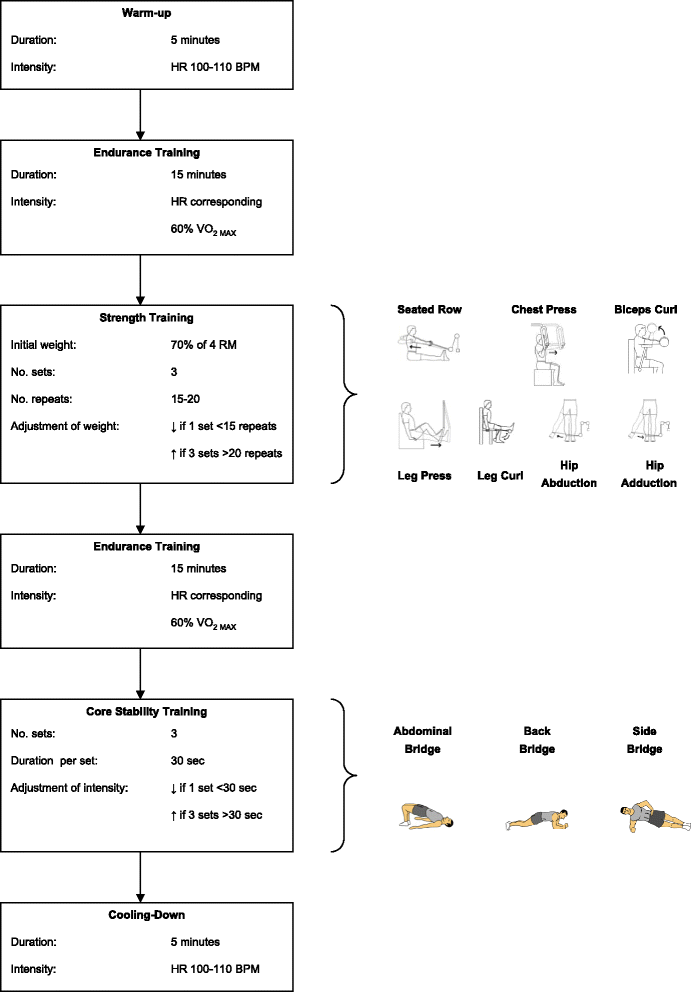Safety and efficacy of exercise training in adults with Pompe disease: evalution of endurance, muscle strength and core stability before and after a 12 week training program
- PMID: 26187632
- PMCID: PMC4506616
- DOI: 10.1186/s13023-015-0303-0
Safety and efficacy of exercise training in adults with Pompe disease: evalution of endurance, muscle strength and core stability before and after a 12 week training program
Abstract
Background: Pompe disease is a proximal myopathy. We investigated whether exercise training is a safe and useful adjuvant therapy for adult Pompe patients, receiving enzyme replacement therapy.
Methods: Training comprised 36 sessions of standardized aerobic, resistance and core stability exercises over 12 weeks. Before and after, the primary outcome measures safety, endurance (aerobic exercise capacity and distance walked on the 6 min walk test) and muscle strength, and secondary outcome measures core stability, muscle function and body composition, were evaluated.
Results: Of 25 patients enrolled, 23 successfully completed the training. Improvements in endurance were shown by increases in maximum workload capacity (110 W before to 122 W after training, [95 % CI of the difference 6 · 0 to 19 · 7]), maximal oxygen uptake capacity (69 · 4 % and 75 · 9 % of normal, [2 · 5 to 10 · 4]), and maximum walking distance (6 min walk test: 492 meters and 508, [-4 · 4 to 27 · 7] ). There were increases in muscle strength of the hip flexors (156 · 4 N to 180 · 7 N [1 · 6 to 13 · 6) and shoulder abductors (143 · 1 N to 150 · 7 N [13 · 2 to 35 · 2]). As an important finding in secondary outcome measures the number of patients who were able to perform the core stability exercises rose, as did the core stability balancing time (p < 0.05, for all four exercises). Functional tests showed small reductions in the time needed to climb four steps (2 · 4 sec to 2 · 1, [- 0 · 54 to -0 · 04 ]) and rise to standing position (5 · 8 sec to 4 · 8, [-2 · 0 to 0 · 0]), while time to run, the quick motor function test results and body composition remained unchanged.
Conclusions: Our study shows that a combination of aerobic, strength and core stability exercises is feasible, safe and beneficial to adults with Pompe disease.
Figures
References
-
- Engel AG, Hirschhorn R, Huie MI. Acid maltase deficiency. In: Engel AG, Franzini-Armstrong C, editors. Myology. New York: McGraw-Hill; 2004. pp. 1559–1586.
-
- Laforet P, Nicolino M, Eymard PB, Puech JP, Caillaud C, Poenaru L, et al. Juvenile and adult-onset acid maltase deficiency in France: genotype-phenotype correlation. Neurology. 2000;55(8):1122–8. - PubMed
Publication types
MeSH terms
LinkOut - more resources
Full Text Sources
Other Literature Sources
Medical
Research Materials



